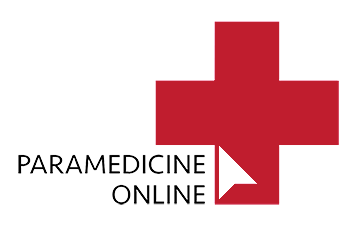What is Recognition Prior Learning?
What is recognition of prior learning (RPL)?
If you’re working currently in a health care role, your current qualifications and work experience can be assessed to see just how close they meet competency standards required to grant Recognition of Prior Learning and/or Credit Transfer.
If you are granted RPL/Credit for a unit you have already studied and been assessed as competent, you don’t need to complete it again. However; it’s important to keep your skills relevant and always be working towards extending your knowledge to make your more employable in the future. In an ever-changing world, it’s now more important than ever to stay one step ahead and give yourself every opportunity to make sure your working life is long and rewarding.
Let’s find out more about RPL by answering some common questions.
How is RPL assessed?
Recognition of what you have learned and are capable of delivering is one way colleges and universities evaluate your institutional learning outcomes by given you an opportunity to demonstrate proficiency in the subject matter. Course credits or advanced standing is awarded when you meet the required criteria.
Why is recognition of prior learning valuable?
RPL Facilitates access for ‘non-traditional’ students – people who may not have had the opportunity to do further study. Acknowledges value of learning outside a formal setting, e.g. values and recognises learning in the workplace. … Enhances students’ perception and understanding of learning as a lifelong process.
What is credit for prior learning?
Credit for prior learning (CPL) is a practice institutions use to award students credit for demonstrated competency and mastery through experiential learning. Students earn college credit for work experience, life experience, independent studies and certifications.
What is the difference between RPL and RCC?
Recognition Prior Learning (RPL) is a process whereby competency acquired through education, training, work experience, previous or current work and/or life experience may be formally recognised. … RPL/RCC are based on the understanding that people learn in different ways.
Do all RTO’s offer RPL and Credit Transfer?
Yes… The Standards for Registered Training Organisations in Australia are quite clear on this. RTO’s offer RPL to learners via a series of assessments to determine assesses the competency of a person which has been acquired through formal, non-formal and/or informal learning.
What are the benefits of Recognition Prior Learning?
There are very good benefits to undertaking RPL processes. By fast-tracking applicants through the skills recognition process, employers can reduce their training costs; plus employees are more engaged as their skills are recognised in the workplace.
As a person looking to seek RPL, the benefits include;
- Improve your CV
- Earn more money
- Save time and money on training programs
- Time- consuming
- Permanent Residency opportunity
–
How much does RPL cost?
The cost of RPL is not fixed, because everyone has different levels of experience. RPL assessment can be time-consuming, so it all depends on who you pick to assess your current skills and experience. Owing to the regulations around defining workplace competency, especially in the prehospital health care sector, you may be asked to provide more details and be asked a lot of questions before a final assessment can be made.
An example of RPL and Credit Transfer
Let’s Meet Mary.
She’s been working as a nursing aid (AIN) for 2 years and also does shift work from time to time at an aged care facility.
Mary has two nationally recognised qualifications in the health care sector.
HLT33115 – Certificate III in Health Service Assistance
- BSBMED301 Interpret and apply medical terminology appropriately
- BSBWOR301 Organise personal work priorities and development
- CHCCOM005 Communicate and work in health or community services
- CHCDIV001 Work with diverse people
- HLTAAP001 Recognise healthy body systems
- HLTINF001 Comply with infection prevention and control policies and procedures
- HLTWHS001 Participate in workplace health and safety
- CHCCCS011 Meet personal support needs
- HLTAID003 Provide first aid
- CHCCCS002 Assist with movement
- CHCAGE001 Facilitate the empowerment of older people
- CHCCCS020 Respond effectively to behaviours of concern
- CHCMHS001 Work with people with mental health issues
- CHCCCS010 Maintain a high standard of service
- CHCCCS026 Transport individuals
There are so many jobs you can do with this qualification, examples include:
Home Respite Worker, Nurse’s Aide, Community Access Coordinator, Planned activity assistant, Accommodation Support Worker, Care Service Employee, Community care worker, Food Services Deliverer, Disability Service Officer, Care assistant, Client Assistant, Care Worker,Community House Worker, Home Care Assistant, Residential Care Worker, Residential Support Worker, Senior Personal Care Assistant, Transport Support Worker, Field Officer (Community Services), Family Support Worker, School Support Officer (Disability) and Residential aide.
This is the other qualification.
CHC30208 – Certificate III in Aged Care
- CHCCCS023 – Support independence and well being
- HLTAAP001– Recognise healthy body systems
- CHCCOM005– Communicate and work in health or community services
- CHCDIV001– Work with diverse people
- CHCLEG001– Work legally and ethically
- HLTWHS002– Follow safe work practices for direct client care
- CHCCCS015– Provide individualised support
- CHCCCS011 – Meet personal support needs
- CHCAGE001– Facilitate the empowerment of older people
- CHCAGE005– Provide support to people living with dementia
- CHCPAL001 – Deliver care services using a palliative approach
- CHCDIS007 – Facilitate the empowerment of people with disability
- HLTAID003 – Provide first aid*Sector: Aged Care and Disability, Community Services
Jobs you can do with the CHC30208 Cert III in Aged Care include:
Accommodation Support Worker, Care Worker, Field Officer (Community Services), Carer,In Home Respite Worker, Support Worker (Community Services), Nurse’s Aide,Disability Service Officer, Community House Worker, Nurse’s Aide and Care Service Employee.
Mary really wants to work in prehospital emergency health care. This means she will be predominantly treating patients before they are admitted to hospital.
To future-proof her career, Mary wants to build her knowledge and competency in the health care sector. This will give her real options to do the type of work she really enjoys. Working inside a hospital or aged care facility is very different from prehospital, where anything can happen. As a prehospital or out-of-hospital EMT (Emergency Medical Technician) you have patients to contend with, as well as coping with awkward locations, unpredictable weather conditions, traffic, environmental hazards, crowds, etc.
Despite the very different working environments, there are some similarities in the way Mary’s existing health care qualifications are aligned with prehospital qualifications.
If Mary decided to study the HLT41115 – Certificate IV in Health Care; based on her current qualifications and experience, she could expect to be credited or RPL’s 10 units that are contained in the Certificate IV.
Example of HLT41115 – Certificate IV in Health Care units credited:
- Comply with infection prevention and control policies and procedures
- Follow safe work practices for direct client care
- Interpret and apply medical terminology appropriately
- Transport Non-Emergency Patients Under Operational Conditions
- Work Legally and Ethically
- Work with diverse people
- Respond to Behaviours of Concern
- Recognise healthy body systems
- Communicate in Complex Situations to Support Health Care
- Provide First Aid
Benefits of RPL/Credit Transfer
To recap…
Mary was already working in a health care job with experience in nursing support and aged care. She wanted more variety in her work life and saw prehospital emergency health care as a Medic, Emergency Medical Technical, First Responder (Basic Life Support) as a good career choice.
Prehospital training course: Certificate IV in Health Care (16 units)
Course credits: 1o units awarded
This means Mary need only complete 6 out of the 16 units in the Certificate IV to become qualified to work in prehospital care. Because of her existing qualifications; she has equates to having completed 62% of the Certificate IV – which also means the time it takes to complete the course will be considerably less than if she has to complete the entire course from the beginning.
Did Mary save money on her training?
Yes…
The price of the units Mary had already completed would be deducted from the Certificate IV course fee. Before proceeding to calculate course fees; be aware there will be some sort of fee for RPL assessment, so please consider it before going ahead. Either way, RPL and Credit Transfer are so much cheaper than paying for the full course.
Calculate the savings
Let’s assume a HLT41115 – Certificate IV in Health Care is $5000 (average cost).
Each unit of competency costs is about $312.50. (this is just an estimate)
With 10 units credited, the Certificate IV course would be reduced $3125.00, leaving $1875 which covers the cost of those 6 units Mary has to complete. Add back the cost of applying for the RPL service – let’s say $1000.
With the remaining $1875 fee for completing 6 units in the Certificate IV + $1000 for the RPL assessment, total cost for Mary to up-skill into the HLT41115 – Certificate IV in Health Care is $2875.
RPL/Credit saved Mary $2125 in course fees
By already working in the health care sector and holding existing qualifications, Mary has saved $2125; or spent 58% less than she would have if she had no qualifications or experience.
Discuss how you can benefit from recognition of prior learning (RPL) by reaching out to us today by clicking here or phone us on (07) 5520 2522 and talk with our friendly team!





